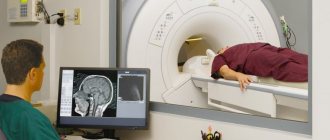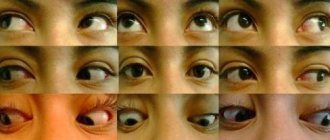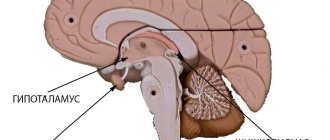One of the most common psychosomatic disorders is situational neurosis; the symptoms of this disorder manifest themselves in different ways. Often a person seeking help from a specialist is faced with a diagnosis such as “Neurosis”.
Many people believe that this kind of illness cannot be called severe and too complex, based on the belief that such illnesses are much easier to tolerate than, for example, diseases of the kidneys, heart, and stomach.
Neuroses, including situational ones, must be treated without fail. Their treatment should be taken as seriously as possible. Being in this state, a person feels very bad and needs qualified help. Situational neurosis in a child and an adult is a disease that requires immediate treatment, otherwise it can lead to heart disease, damage to internal organs and body systems. Sometimes a person does not even realize that at a particular moment he is developing a serious illness.
What are neuroses and why do they occur?
The ICD code for situational neurosis has not been assigned.
The pathology ranges from F34 to F68. One of the most common psychosomatic disorders is situational neurosis; the symptoms of this disorder manifest themselves in different ways. Often a person seeking help from a specialist is faced with a diagnosis such as “Neurosis”.
Many people believe that this kind of illness cannot be called severe and too complex, based on the belief that such illnesses are much easier to tolerate than, for example, diseases of the kidneys, heart, and stomach.
Neuroses, including situational ones, must be treated without fail. Their treatment should be taken as seriously as possible.
Being in this state, a person feels very bad and needs qualified help. Situational neurosis in a child and an adult is a disease that requires immediate treatment, otherwise it can lead to heart disease, damage to internal organs and body systems.
Sometimes a person does not even realize that at a particular moment he is developing a serious illness.
There are more and more patients with mental disorders every day.
Patient behavior
The main personality traits that lead to conflict of thoughts:
Based on the type of behavior of patients, conflicts are divided into the following types:
Hysterical type
A person with a hysterical type of neurosis may have the following character traits:
Situational neurosis is characterized by inflated demands on the surrounding world. A person can completely ignore traditions, etiquette, and even such real facts as cold in winter and warmth in summer.
At the same time, the patient allows himself not to criticize himself. His thoughts work according to the following image: “The world should be the way I imagine it. Everything around me must adapt to me.” This type of neurosis is demonstrated by the fairy-tale hero - Princess Nesmeyana. Here the cause of the disorder lies in upbringing. Treatment should occur only through psychotherapy.
Neurosthenic type
The demands placed on oneself are too high here. A person demands the impossible from himself. And when he fails, he panics.
A conflict arises when there are needs that are unrealistic for an individual to achieve in a given situation:
When hopelessness has not taken over the entire consciousness, then the conflict may not end in neurosis. Otherwise, a disorder of the nervous system occurs.
It depends both on the situation and on the body's ability to counteract unfavorable thoughts.
Characteristic qualities of a patient with a neurasthenic type of disorder:
The performance of such individuals can be high and spurred by anxious thoughts.
Obsessive-psychasthenic type
This type of disorder can be called behavioral weakness. It is expressed in the fact that the individual cannot decide what he needs. Today he wants to be a sailor, tomorrow a scientist, and the day after tomorrow he goes to work as a loader and curses himself for his failed life.
Conflicting demands on oneself cause internal conflicts, which lead to an inferiority complex.
Characteristics of such a person:
Here, emotionality combined with restraint is characteristic: the individual experiences the received impressions within himself. This leads to non-standard conclusions and contributes to the development of self-hypnosis: the patient tends to form long logical chains in the brain and draw conclusions that do not correspond to reality.
Causes of neurosis
The cause of neuroses is the action of a psychotraumatic factor or a psychotraumatic situation. In the first case, we are talking about a short-term but strong negative impact on a person, for example, the death of a loved one.
In the second case, we talk about the long-term, chronic impact of a negative factor, for example, a family conflict situation. Speaking about the causes of neurosis, it is psychotraumatic situations and, above all, family conflicts that are of great importance.
However, both factors and situations will cause painful and painful experiences. The inability to find a productive way out of a conflict situation leads to mental and physiological disorganization of the individual, which is manifested by mental and physical symptoms.
- family and household factors and situations;
- interpersonal conflicts;
- intrapersonal (interpersonal) conflicts;
- derived factors;
- death of loved ones;
Family factors and situations
Being a part of society, a person interacts with the environment that surrounds him, all the time colliding with the interests of others. Moreover, in the human psyche itself there may also be directly opposite aspirations, desires and attitudes. If, when there is a clash of interests, it is impossible to reach a compromise, then the situation, as they say, “hangs in the air” and creates internal tension.
Such tension may not be recognized at all, or it may be a certain background, which becomes aggravated upon contact with an irritating factor. Long-term tension robs a person of strength. As a result of the depletion of reserves inside, disruptions in the functioning of the nervous system begin.
The human nervous system, when under stress, loses stability and becomes exhausted. In response to a minimum of provoking factors or even without them, a not entirely normal mental reaction or painful symptom may appear, creating a clinical picture of a certain type of neurosis.
A person, being part of society and interacting with the environment, constantly finds himself in situations of conflict of interests. Moreover, directly opposite attitudes, desires and aspirations can also exist within the human psyche. If, when there is a clash of interests, it is impossible to reach a compromise, then the situation, as they say, “hangs in the air,” giving rise to internal tension.
This tension may not be recognized at all or is a kind of background, worsening upon contact with an irritating factor. Long-term tension takes away a person's strength. As a result of the depletion of internal reserves, disruptions in the functioning of the nervous system begin to occur.
Psychotraumatic factors
Neuroses appear mainly under the influence of certain personal attitudes acquired during life and behavioral reactions formed in childhood. For example, a person gets upset when he does not achieve a certain result or does not get what he wants. The perception of this fact is laid down in childhood. An adequate response to failure involves the attitude: “I didn’t learn today, I didn’t try enough. Tomorrow I will correct my mistakes and achieve the desired result.” With an inadequate reaction, a person begins to engage in self-flagellation, blames himself for everything and cannot concentrate on continuing his activities. Obsessive thoughts arise that are difficult to get rid of by force of will.
Neurosis is formed against the background of an unresolved personal problem. In most cases, due to disagreements in the family. This factor equally negatively affects the psyche of adults and children.
The impetus for the development of neurosis can be hormonal changes in the body during puberty. This moment is associated with the active formation of a personal structure in children. The teenager begins to realize and “create” himself as a full-fledged member of society. The stress of receiving a large flow of information during the learning process is also added.
Clinical picture of neurotic conditions
The clinical picture of neuroses consists of both negative experiences of a subjective nature (feelings of inferiority, anxiety) and somatovegetative disorders. In neurotic conditions, emotional disorders come to the fore.
The psychogenic nature of neuroses indicates that they are caused by the action of psychological factors (state of conflict) and are directly related to increased symptoms of the disorder in traumatic situations.
The main forms of neuroses should be divided into:
- neurasthenia (situational neurosis);
- anxiety neurosis;
- psychasthenia;
- obsessional neurosis;
- hysterical neurosis.
- neurasthenia (situational neurosis);
- anxiety neurosis;
- psychasthenia;
- obsessional neurosis;
- hysterical neurosis.
Real manifestation
An unsolvable task, an unresolved conflict, this whole kaleidoscope of cloudy glass endlessly spinning in our heads depletes our internal mental reserves - we throw our energy into trying to “keep our head above water.” There is no longer any desire or opportunity left to really look for a way out. Therefore, there arise:
- very rapid fatigue, chronic fatigue syndrome, as if there is not enough vitality, with absolute health this can cause misunderstanding among others (“Fictions, you’re just being lazy!”) - and the neurotic state will worsen;
- high excitability - literally everything irritates: loud conversations, bright lights, music, even the usual noise of the city outside the window - although before it did not attract the slightest attention;
- incontinence in expressions of emotions - tension up to hysterical agitation, tearfulness, anger, increased sensitivity (which also does not contribute to success with others);
- decreased concentration, absent-mindedness, memory impairment;
- deep dissatisfaction with life (“I’m nothing”);
- increased anxiety, fears, phobias - often groundless (“I feel like something bad is going to happen”).
Such “happiness” occurs against the background of an abnormal, increased fixation on a traumatic situation. Literally, “there’s no way to get her out of my head.” And since the soul and body are connected, very real somatic symptoms begin! These manifestations are as varied as we ourselves: it is impossible to predict what kind of trick this or that organism will pull.
It can be:
- sleep disturbances up to chronic insomnia;
- dizziness, headaches, sometimes severe migraines;
- cardiac dysfunction;
- jumps in blood pressure and the “charms” associated with them - chills and sweating, “sparks” in the eyes, “lump in the throat”, numbness of the arms and legs, tremors, difficulty breathing, increased heart rate;
- disruptions in the functioning of the gastrointestinal tract - constipation, “bear sickness”, nagging pain (“stress causes ulcers” - it’s true!);
- difficulties in the sexual sphere (for men this is an additional stress factor; male incompetence is in itself painful for most men).
As you can see, there is a real danger to your health!
Stages of disease development
Neurotic reactions do not always turn into illness. It all depends on how long the person was in a stressful situation and how much he experienced it. Even if these reactions develop into a disease, it can end at any stage with appropriate treatment.
At the first stage, the body becomes weakened and the disease begins. At the second stage, the disorder of the nervous system already becomes acute, and at the third stage it becomes chronic. The fourth stage is the most difficult to treat, because at this stage neurotic reactions and behavior already become part of the person’s character.
In ICD-10, the second stage of situational neurosis is designated by code F43. The acute form of neurosis lasts several months or hours, it all depends on the amount of stress experienced by the person.
This condition does not allow the nervous system to become exhausted and there is a huge danger that the patient will feel good in his status. Such patients begin to resist all types of treatment and subconsciously cling to the disease.
Often people use their diagnosis to extract maximum bonuses for themselves from their family and friends. They can play on feelings of guilt, blame others for making him sick, or, on the contrary, appeal to pity, show how bad they feel and thereby receive additional attention from the family.
The disease at this stage can recede even without treatment, because if loved ones were the cause of stress and after the diagnosis changed their behavior, the stressful situation itself disappears and the person feels better!
By the way, often a diagnosis serves as an excellent excuse why something in life has not yet worked out or has not turned out the way I wanted, it’s so convenient - I’m sick, so I can’t work fully...
Whether the disease will recede or go into a chronic stage depends more on the mood of the patient, on what he is ready to do and whether he wants to get out of it. If, after all, the disease has passed into the third stage, chronic, a note is placed in ICD-10 when describing the disease with code F43.2.
Psychological conflicts
The disorder arises on the basis of conflicts that have arisen in the mind, which are of two types:
Situations that lead to neurotic conflict:
The strength of mental trauma and symptoms depend not only on the situation, but also on the characteristics of the body: character, gender, age, upbringing, education, profession. ICD-10 recognizes this. Therefore, one person neutralizes the trauma, while the other remains inactive, which leads to neurotic conflicts.
Symptoms of the disease
Conventionally, there are three forms of neurosis, each of which is characterized by its own symptoms.
Neurasthenia
Neurasthenia or nervous weakness is the most common form of neurosis. The main manifestation of this neurosis is increased excitability and easy exhaustion.
- increased excitability;
- fatigue;
- hot temper;
- irritability;
- rapid change of emotions (sadness and joy);
- anxiety;
- cognitive disorders in the form of decreased memory and attention.
At the same time, increased excitability is noted not only in the patient’s psyche, but also in his somatics (
As a rule, neurasthenia develops slowly and gradually under the influence of prolonged trauma. This traumatic situation leads to constant tension and lack of sleep. Prolonged stress leads to exhaustion
, which reflects the essence of the disease. Neurasthenia literally means “weakness of the nerves.”
What caused the reaction?
The specificity of the reaction is due to:
- characteristics of the state of health and nervous system;
- what aspects of existence are affected by unresolved conflict;
- degree of tension;
- the duration of existence of various factors and situations.
With prolonged tension, but not too strong, or when a person does not fully understand the causes of the conflict and does not act in any way to resolve it, the neurotic reaction is delayed. As a result, certain lasting changes occur in the psyche. They initially have the nature of an adaptation, but at the same time they can contribute to painful manifestations, creating a “vicious circle”. Under the influence of a neurotic disorder, a person’s character deteriorates, which is why his interaction with other people becomes more conflicting.
Diagnosis of the disease
Neurosis cannot be diagnosed in the ways that are usually used in medical practice, that is, through examination and laboratory tests.
Psychotherapists use techniques such as conversation or testimony from loved ones who can tell about the peculiarities of the external manifestations of the patient’s behavior. Color diagnostics are also sometimes used.
Thus, patients with anxiety neurosis, when asked to choose the most pleasant color for them, point to black, gray, brown or purple. With the hysterical type, patients prefer red and purple.
For mild forms of pathology, psychotherapy is practiced. The doctor conducts conversations with the patient, analyzes his actions or behavior in a given situation, pushes him to treat circumstances differently, not so painfully.
In some cases, hypnosis is used. Behavioral disorders are corrected with the help of suggestion, direction on a subconscious level towards a calm attitude towards life’s problems.
In cases where such methods do not help, drug therapy is prescribed in parallel. Depending on the degree of neglect of the neurosis, these can be relaxing agents or, conversely, stimulating ones.
It is important not to let neurosis take its course. Seek help from a specialized specialist. Constant mental stress can lead to serious complications and longer and more difficult treatment. Then high body temperature or frequent urination will not be the only problems along with mental manifestations.
In addition to medical therapy, it is necessary to pay attention to neurosis at home. It is good if the patient finds an interesting and exciting hobby. This ensures that he is distracted from obsessive thoughts.
Moderate physical activity should be introduced: jogging, race walking, going to the pool.
Many psychologists and psychotherapists promote music therapy in the treatment of neuroses. It is necessary, together with the patient, to select the calmest music that most appeals to him. For example, “The Seasons” by Schubert or “Moonlight Sonata” by Beethoven. It is useful to listen to music before bed.
You should get more rest. Relaxation or yoga can help you relax and stop the constant flow of thoughts.
Neurosis is quite difficult to diagnose: it cannot be done only as a result of clinical tests and personal examination. It is necessary to have conversations with the patient, get to know the situation that has developed around him in society, get to know the working conditions, family, and ways of leisure and recreation.
How does this pathology manifest itself?
A number of symptoms of this condition were given above. Any possible manifestations are divided into two large groups: physical and mental. Psychiatric manifestations include:
- anxiety;
- memory impairment;
- tension;
- negative expectations and fears;
- nervousness;
- pathological focus on a traumatic situation;
- decreased concentration.
Mental symptoms reflect the fact that a person’s mental reserve is distracted by maintaining balance; it may not be enough to support mental daily activities. Also, one of the main manifestations of such neurosis is mental fatigue. As it progresses, depression may appear, in some cases interspersed with exacerbations in the form of outbursts of anger.
The physical manifestations of situational neurosis (in ICD F34-F68) are quite diverse. They appear due to defects in the autonomic regulation of the activity of internal organs, which can affect the functioning of the gastrointestinal tract, cardiac activity and the sexual sphere.
Patients often turn to a specialist with precisely such complaints and do not admit that the cause is actually situational neurosis. Some of these symptoms include: periodic increased heart rate, sweating, a feeling of a lump in the throat, a feeling of shortness of breath, dizziness, tremors and headaches.
View gallery
Treatment of neurosis
How can you help a person in a state of neurosis?
A person experiencing neurosis needs help from loved ones. The patient needs support both during exacerbation of the disease and during remission.
One of the most effective methods of helping a patient during neurosis is verbal support. To alleviate suffering, a number of rules should be followed when talking with a sick person.
The main thing to do when getting rid of an illness is to try to eliminate the negative situation that caused the illness. A visit to a psychotherapist is recommended to change the attitude towards this problem and find a way out of traumatic situations.
The first thing to do in the treatment of situational neurosis is to try to eliminate the unfavorable situation that caused the disease. It is recommended to work with a psychotherapist to change the attitude towards the problem and resolve traumatic situations.
Let's imagine an absurd case: someone finds himself locked in someone else's apartment - let's say he had to spend the night with not very close friends. In the morning he discovers that he is alone, locked on the fifth floor, he has no phone, and the lock cannot be opened from the inside.
He is hopelessly late for work, cannot tell his loved ones where he was late, and the owners do not return... He can’t even imagine why the owners left without warning him. When can they return - in an hour or a week? You need to get out of this stupid time pressure - and the person begins to struggle with the door, trying to open it from the inside or, at worst, break it.
But a modern armored monster is installed in the joint...
Eliminating the symptoms of the disease with medication is only possible temporarily. Treatment will be complete only if the conflict situation is eliminated or resolved.
Drug therapy includes adaptogens, psychotropic drugs, and multivitamins. Physiotherapeutic treatment (massage, acupuncture) and restorative measures (physical therapy, swimming, normalization of the daily routine) also help.
In children
When it’s difficult for a child, it’s difficult for adults (and other children) to deal with him. The bad thing is that adults too often underestimate children’s difficulties: “What problems does he have at five years old!” For some reason, even to quite reasonable elders, children's troubles seem unreal, like toys.
But the child is real! And he tends to react exactly the same way as you! Think about where the whims, tearfulness, outbursts of rage, night terrors, “miracles” with digestion come from... Isn’t the source of childhood experiences in the family? Is it not your attitude towards your partner, loved ones, or the child himself that is the cause of childhood misfortunes? A neurotic effect can occur even without an obvious event - as a consequence of the rules you have established for the child. If it obviously breaks out of your frame, this is an injury! And always remember: situational neurosis is not just for adults!
If you are sure that there is a wonderful atmosphere in the family, be puzzled by how the child feels outside the family, in society: in kindergarten, at school, in the sports section.
Prevention of recurrences of neurosis
Prevention of neuroses includes a set of measures to create favorable living and working conditions, normalize sleep and eliminate factors that can provoke emotional stress. Proper nutrition and maintenance therapy, including self-hypnosis and relaxation classes, will help prevent neurotic disorder.
- balanced diet enriched with vitamins;
- eliminating factors that can provoke the disease;
- developing a tolerant attitude towards stress.












